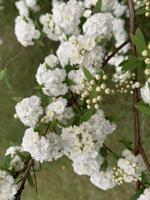Here in the Lowcountry, the summer and winter solstices, like the spring and autumn equinoxes, not only mark positions of the sun relative to the Earth but signal shifts in average temperatures. The summer solstice, June 21, marked the beginning of the heat and humidity of summer. Typically, the humidity begins to wane by the autumn equinox, Sept. 22 this year.
July marks the beginning of the true summer season in the garden. Of course, many of the plants that start to flower in June still are flowering in early July. These include late blooming varieties of daylily and lily of the Nile, like “Queen Mum.” My plant didn’t bloom until July 2, 2016, after it froze back that cold winter.
Seasonal bloomers like coneflowers and perennial and reseeding black-eyed Susans are still flowering.
Long-season bloomers like society garlic (currently a popular commercial landscape plant), gaura, common lantana, California bush daisy, Texas star hibiscus, plumbago, mandevilla and many kinds of salvias continue to flower in July and beyond.
Some of these “full sun” plants will bloom fine in part sun. Based on my experience, these cooperative plants include “Goldsturm” black-eyed Susan, Texas star hibiscus, society garlic, gaura, bog sage, and the salvias “Black and Blue” and “Amistad.” As might be expected, plants placed in part sun will bloom later, up to two weeks later, than those growing in full sun.
Late-blooming crinums like “Ellen Bosanquet” may still have flowers in July. This variety is a very reliable bloomer with its beautiful deep magenta petals, one of the richest colors available in a crinum. The first flower opens between June 8 and 28. My well-established plant always has two stalks, and this year it had a third.
“Cecil Houdyshel,” a lovely pink variety of the hybrid Crinum powellii, also may flower again in July, as mine did last year.
Many fewer plants start to flower in July than in May or June. Native swamp crinum blooms between June 23 and July 12, based on dates I recorded in my yard between 2011 and 2018. Last year and this year it started blooming the last week in June, probably because of adequate rainfall in the preceding week. The milky white petals show up nicely from a distance on cloudy summer days.
This plant will spread if planted in its preferred spot, a moist area in part sun to part shade. Each plant produces one flower stalk with six to eight flowers that bloom for only two days, so letting them spread into a large clump provides more flowers.

Orange bottlebrush ginger, which blooms in mid- to late summer, fills a void when few perennials bloom. Anthony Keinath/Provided
Various types of gingers are useful plants for the summer garden. Because they freeze back every winter, they typically need until August to reach flowering stage, but some varieties could bloom the very end of July.
Butterfly ginger is a classic Southern heritage plant, according to Southern Living Plants. Its large white flowers are intoxicatingly fragrant. This ginger may bloom in July, as it did in 2012, a year with a very warm winter and spring throughout the eastern United States. The buds of this ginger form one thick cluster, like the flowers of a crinum lily. A few open at a time and last for two days apiece.
All the flowers on a stalk of orange bottlebrush ginger open at once, as the common name “bottlebrush” implies, for an eye-catching focal point. The botanical name of this ginger, Hedychium coccineum, means “red,” due to the orange-red flowers. This species is sold under various common names, including “Disney Orange.” Check the species name before buying an additional plant to be sure it is in fact a different ginger.
Many other species and varieties of gingers are available. Plant Delights Nursery has an extensive list (bit.ly/3P96wRW). Note that some, like yellow or golden ginger (Hedychium flavum), are not cold hardy in South Carolina, even in the Lowcountry.
Plants in flower need regular water to maintain flowers and leaves. Near the end of the month, a half-strength dose of liquid fertilizer formulated for blooming plants, with extra phosphorus, or a full-strength dose of fish emulsion fertilizer for organic gardens, will help keep flowers coming beyond July.



























